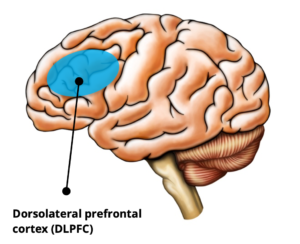Quick Hits
Daily brief research updates from the cognitive sciences

Those who have followed my writing and articles will know that this is a question that comes up regularly. Just what is different to human brain compared to other species?
The simple answers tend to be partly true but there are multiple answers and they don’t individually explain everything.
For example, we know that our prefrontal cortex – that part of the brain behind your forehead – is particularly large and developed in human beings. We also know that the regions between our cortices are larger in human beings and seem to be involved in many higher-order thinking processes. We also know that relatively speaking our small brain, the cerebellum that sits at the back of our head, is much larger in human beings.
That is just on size of regions but I also reported previously on a mysterious type of brain cell called Von Economo neurons. So mysterious that only one recording of this cell has been measured. These seem to be present in some species with higher intelligence such as chimpanzees, elephants, and dolphins.
Is there anything else?
Well, this is what these researchers around Shaojie Ma of Yale University set out to explore.
For this they focused on a region called the dorsolateral prefrontal cortex because this is unique to primates. They then conducted single cell RNA analysis of hundreds of thousands of cells from humans, chimpanzees, macaques, and marmoset monkeys.

This technique allows much more refined categorisation of cells and can measure genetic differences between cells that may look similar. And I’m sure you will want to know what they found.
They found 109 types of cells that are shared between all primates. Five were not present in all species (only!). One was unique to human beings and chimpanzees, and one was unique to humans only. This was a glial cell – glial cells are considered “helping” or “supporting” cells but have many critical functions in the brain. This seems to be associated with brain upkeep.
The other surprise was they also discovered the FOXP2 gene in this glial cell. A surprise because this gene is associated with language development and is unique to human beings. Various forms of this are also associated with various human conditions such as autism and schizophrenia.
This piece of research is particularly interesting – these techniques open up many more avenues and unprecedented levels of detail of the differences in brains. They also open up new avenues and new mysteries!
So here we can quantify another specific difference in human brains related to glial cells and the FOXP2 gene but this also begs the question – what precisely does FOXP2 do and can this glial cell really make a difference? But then again as I said there are other factors that make human brains different, and it is the combination of these which gives us our unique differences.
But as with the FOXP2 gene when things don’t go according to plan it can also break things and give us our very human disorders also.
But knowing this can also lead us to clearer explanations and solutions – I am watching the space carefully!

Andy Habermacher
Andy is author of leading brains Review, Neuroleadership, and multiple other books. He has been intensively involved in writing and research into neuroleadership and is considered one of Europe’s leading experts. He is also a well-known public speaker, speaking on the brain and human behaviour.
Andy is also a masters athlete (middle distance running) and competes regularly at international competitions (and holds a few national records in his age category).
Reference
Shaojie Ma, Mario Skarica, Qian Li, Chuan Xu, et al.
Molecular and cellular evolution of the primate dorsolateral prefrontal cortex.
Science, 2022
DOI: 10.1126/science.abo7257
More Quick Hits
Petting (Real) Dogs Activates the Social Brain
There have been lots of studies into the positive impacts of having pets around us – but this study just published looked at brain activation patterns while being with a dog, petting a dog, and…
Metabolism Predicts Brain Health
Understanding the link between dementia, brain health, and various metabolic disorders such as obesity is important and gives us important clues in…
Super Agers Have Super Neurons
SuperAgers are those who live long, over 80, but retain their cognitive functions including a healthy functioning memory and seem to avoid neurodegenerative disorders such as Alzheimer’s…
How Nature Lowers Stress in Your Brain
Nature is overwhelmingly good for wellbeing but there are many chicken-or-egg problems with the research. This study…
Correcting Others Improves Group Learning
Some interesting and counter-intuitive insights into effective group learning…
Air Pollution In Childhood Changes Brain Structure
Recent research has shown some worrying impacts of pollution on the brain…






